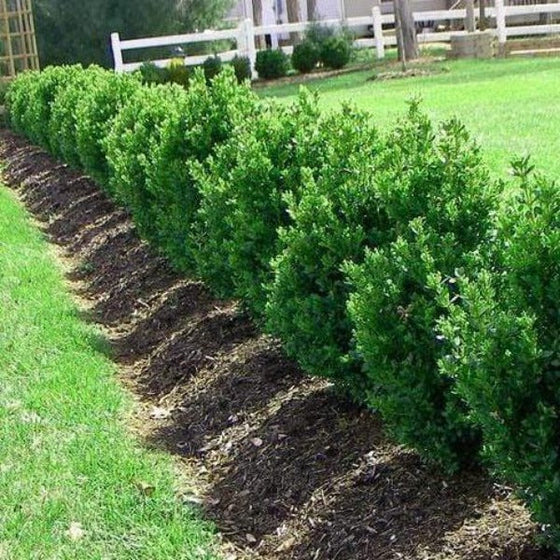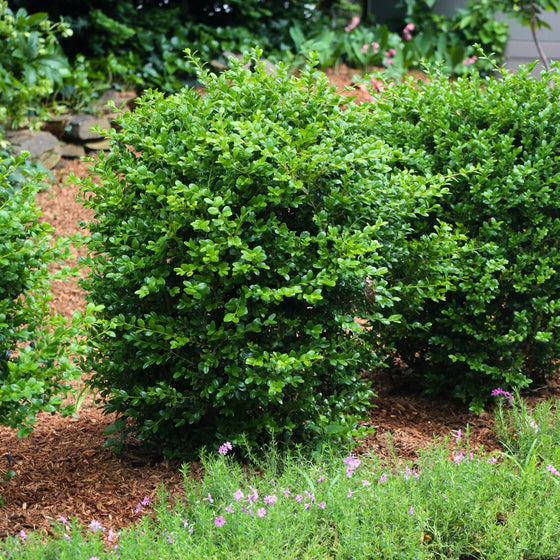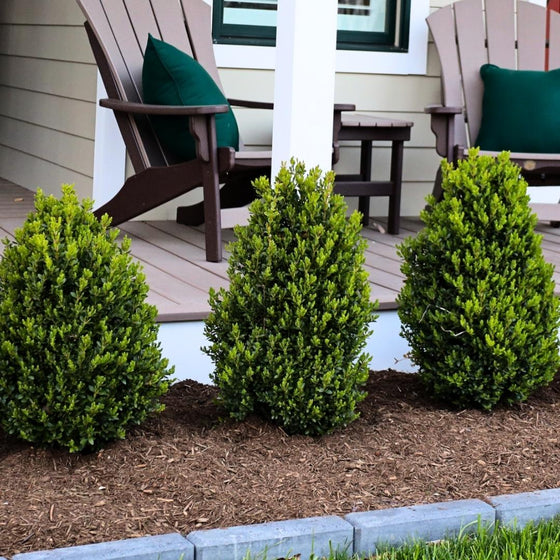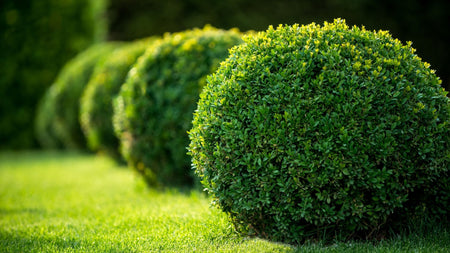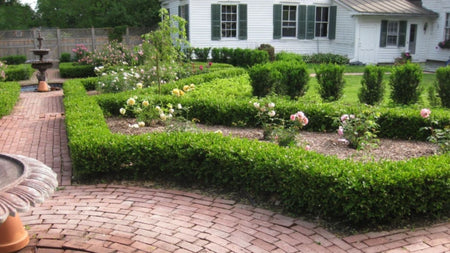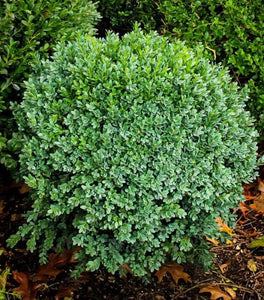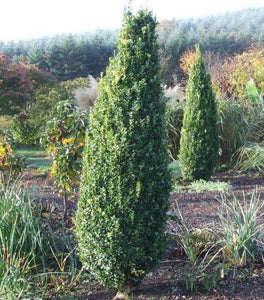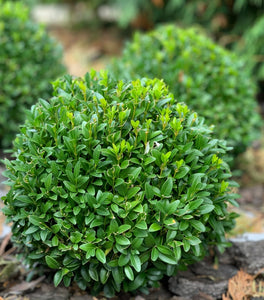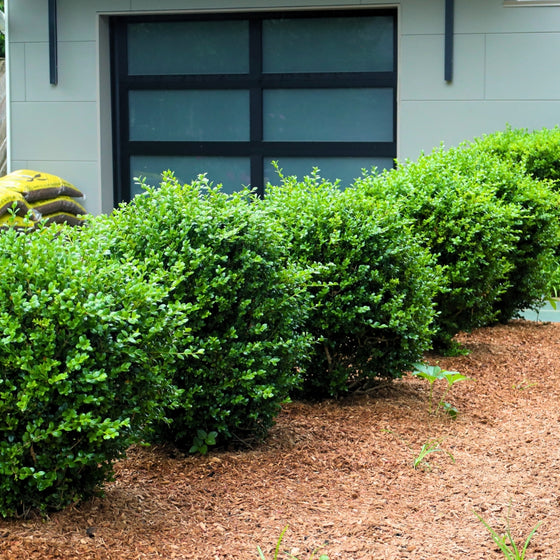
Images Depict Mature Plants
Green Mountain Boxwood – Upright Evergreen Shrub for Formal Hedges and Topiary
A refined evergreen with natural structure.
The Green Mountain Boxwood (Buxus sempervirens ‘Green Mountain’) is a standout among boxwoods for its unique upright, pyramidal growth habit. Unlike rounder boxwood varieties, Green Mountain naturally grows tall and conical, making it a perfect choice for hedges, vertical accents, and topiary work. Its dense, rich-green foliage holds its color all year, ensuring a polished look in every season.
Ideal for hedges, borders, and topiary.
Growing to 4–5 feet tall and 2–3 feet wide, Green Mountain Boxwood is a compact yet structured plant, offering just the right proportions for formal garden designs, foundation plantings, and borders. Many homeowners use it to frame entryways, line walkways, or shape into geometric topiary forms, where its naturally upright form requires minimal training.
A Cold-hardy and reliable Boxwood.
Hardy in USDA Zones 5–8, Green Mountain is one of the most cold-tolerant boxwoods, able to withstand harsh winters better than many other varieties. It thrives in full sun to partial shade and adapts well to a range of soils as long as they are well-drained. Its slow-to-moderate growth rate makes it easy to manage without constant pruning.
Low-maintenance elegance.
Whether you’re designing a formal landscape with structured hedges or simply adding evergreen definition to your property, Green Mountain Boxwood is a versatile choice. With its pyramidal shape, hardiness, and low-maintenance care needs, it’s the perfect evergreen shrub to bring year-round sophistication and structure to your landscape.
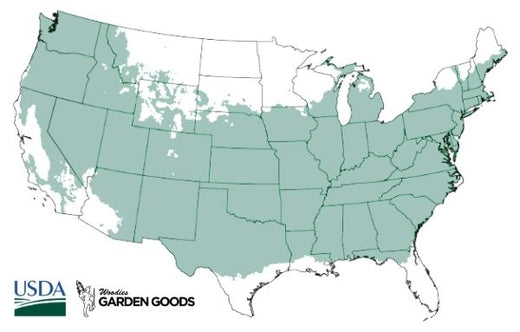
| Hardiness Zone: | 5-8 |
|---|---|
| Mature Height: | 4-5 feet; less if trimmed |
| Mature Width: | 2 to 3 Feet |
| Classification: | Evergreen Shrub |
| Sunlight: | Full Sun to Partial Shade |
| Habit: | Evergreen, dense foliage |
| Flower Color: | Inconspicuous |
| Foliage: | New growth emerges bright green and retains its color in the winter |
| Soil Condition: | Well-drained, slightly acidic to neutral |
| Water Requirements: | Water well until established |
How to Care for Green Mountain Boxwood
Before you purchase your Green Mountain Boxwood, be sure to read the recommended care instructions to ensure your plant remains happy and healthy for years to come.
How do I plant Green Mountain Boxwood shrubs?
Choose a location with full sun to partial shade and well-draining soil. Dig a hole twice as wide as the root ball but no deeper. Place the shrub so the crown sits level with the soil, backfill halfway, water thoroughly, then finish filling the hole and water again. For hedges, space Green Mountain Boxwoods 2–3 feet apart for a dense, structured wall. Finish with a 2–3 inch layer of mulch around the base to retain moisture and suppress weeds, keeping mulch away from the trunk to prevent rot.
How often should I water Green Mountain Boxwood?
During the first growing season, water regularly—about once or twice per week—to help the roots establish. Ensure soil remains evenly moist but never waterlogged. Once established, Green Mountain is relatively drought-tolerant, needing only occasional deep watering during dry periods. In hotter climates, providing consistent moisture helps maintain vibrant foliage.
When and how should I fertilize Green Mountain Boxwood?
Fertilize in early spring with a balanced, slow-release fertilizer designed for evergreen shrubs. Spread evenly around the root zone and water in thoroughly. In most cases, one annual application is sufficient to support healthy growth. A second light application in midsummer may benefit younger plants or those growing in poor soils.

Does Green Mountain Boxwood need pruning?
Green Mountain naturally grows in a pyramidal, upright form, so it requires minimal pruning. Light trimming in late spring or early summer can help maintain sharp edges in hedges or topiary. Avoid heavy pruning into old wood, as boxwoods do not regrow from bare branches. With proper placement, pruning is optional rather than required.


